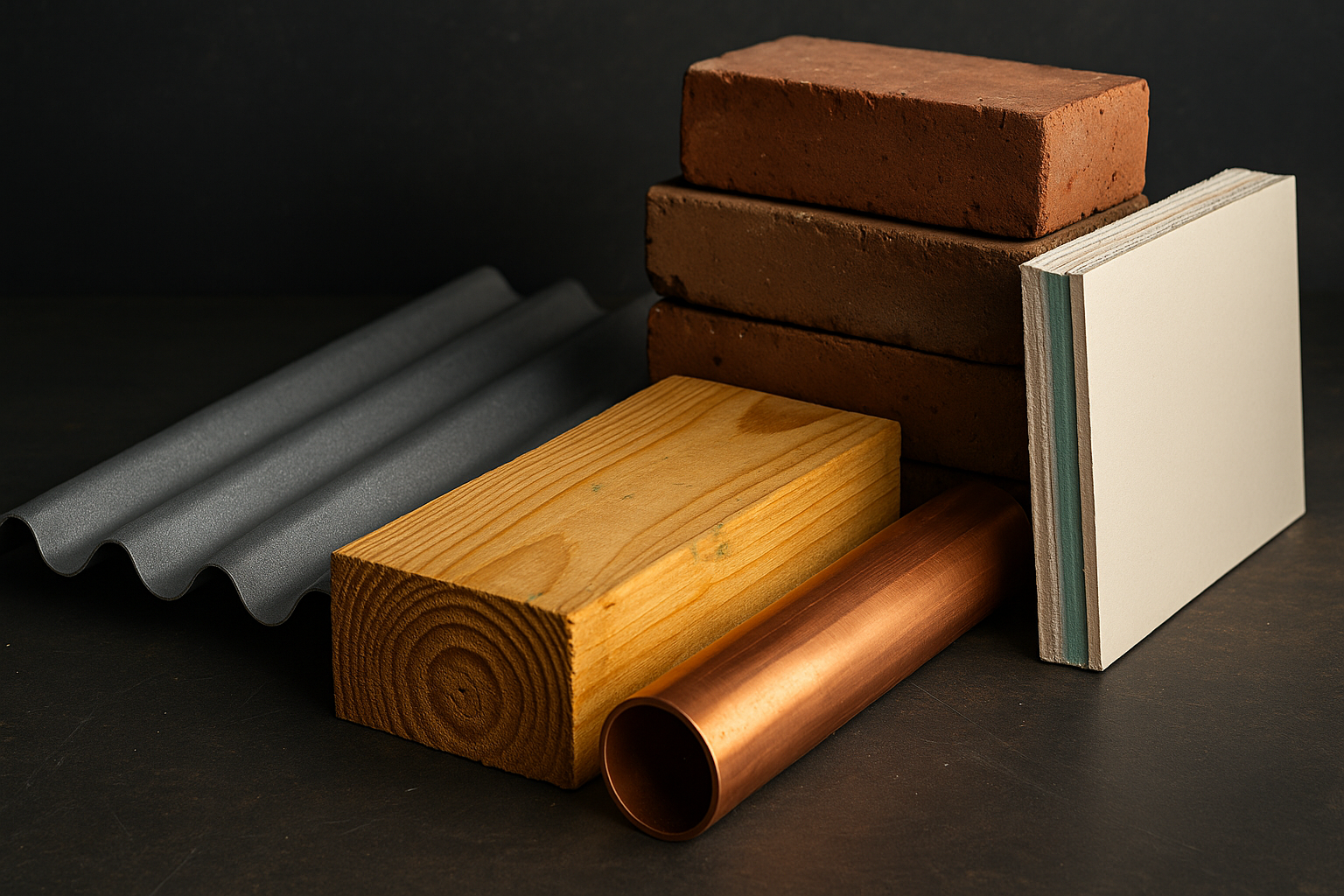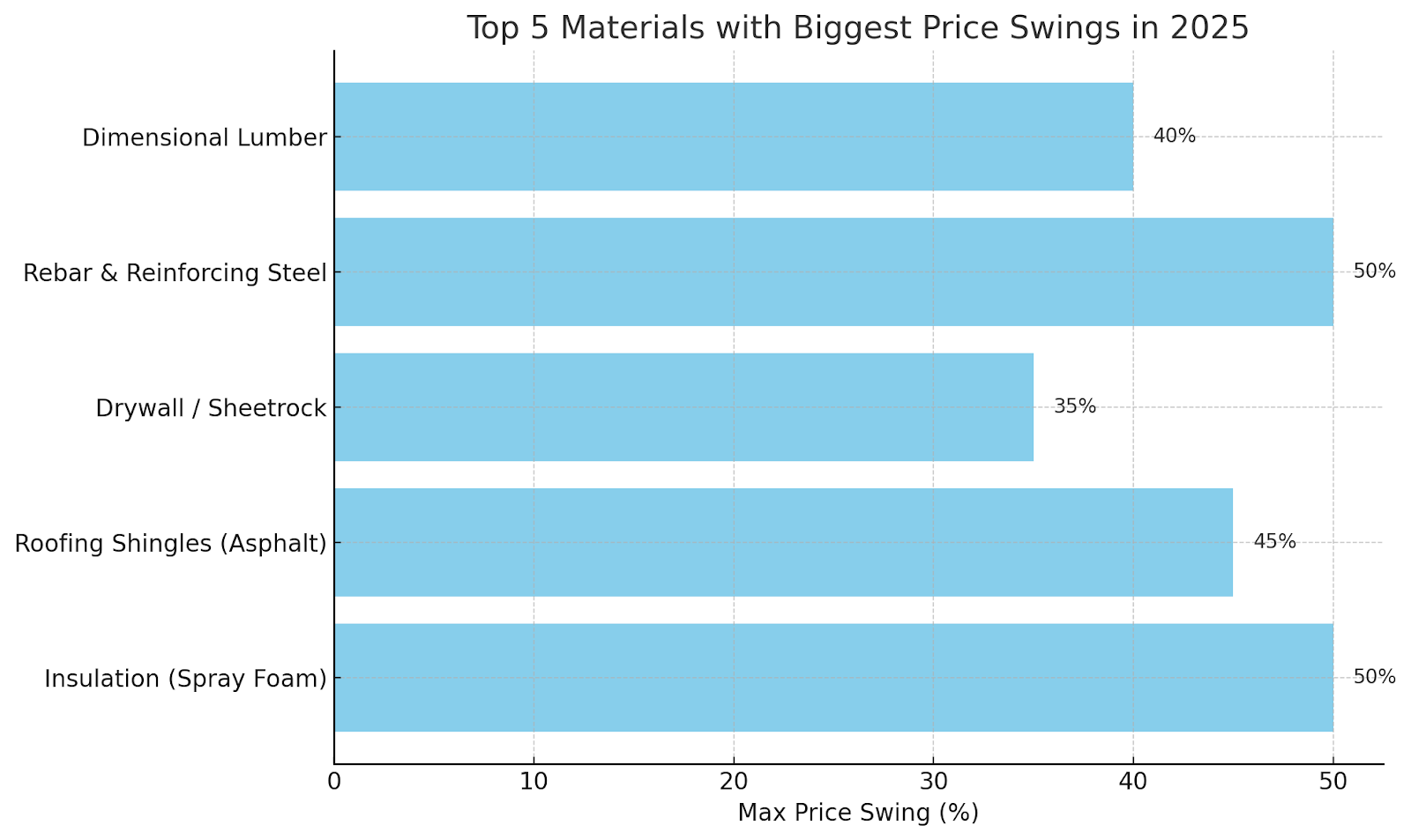

Prices are all over the place in 2025. This post covers the five materials with the biggest swings—like lumber, rebar, and insulation—and how to plan around them.
Material prices in 2025 have been anything but stable. Contractors, suppliers, and homeowners alike are feeling the squeeze — and for some materials, the price swings have been dramatic. Whether you're budgeting for a large build or trying to finish out a smaller project, it's important to know which materials are most volatile this year.
Here’s a look at the top five materials with the biggest pricing fluctuations so far in 2025 — and what you can do about it.

Lumber prices are no stranger to volatility, and 2025 is no exception. While they’ve calmed a bit since the COVID boom, regional shortages and mill capacity issues are still causing sharp swings — especially in fast-growing metro and mountain areas.
🔁 Swing range: 25–40% variance depending on location
📍 Hot spots: Utah County, Boise, parts of Colorado
Pro Tip: Use Ruck’s TRAKKER app to monitor local lumber pricing trends — and avoid overpaying at the wrong time.
Infrastructure builds and large concrete jobs have pushed rebar demand higher than expected, but international steel supply issues and scrap shortages have led to major delays and price increases.
🔁 Swing range: 30–50% in some markets
📍 Hot spots: Urban markets with lots of new development
What to Watch: Projects using slab-on-grade, CMU walls, or any large-scale foundation work should plan early and expect shifting lead times.
You wouldn’t think drywall would be hard to get — but shipping delays and gypsum supply bottlenecks have driven prices up. Some brands are also cutting SKUs, meaning contractors have fewer size and fire-rating options than before.
🔁 Swing range: 20–35%
📍 Hot spots: Mountain West and rural supply chains
Solution: Order ahead when possible, and use Ruck for quick fulfillment if you're sourcing from a city-based supplier.
Storm damage, insurance rebuilds, and labor shortages have created the perfect storm (no pun intended) for roofing material inflation. Roofing crews are also stretched thin, meaning materials are stockpiled longer and supply is inconsistent.
🔁 Swing range: 25–45%
📍 Hot spots: Midwest, Mountain States, storm-prone regions
Pro Tip: If your vendor is charging more for local delivery, consider scheduling a Ruck driver — you’ll likely save money and time.
Spray foam insulation prices have climbed steadily due to chemical supply issues and high energy demand. Even batt and blown-in insulation are affected by rising shipping costs and regional shortages.
🔁 Swing range: 30–50% (spray foam in particular)
📍 Hot spots: Cold-climate regions like northern Utah, Montana, and Idaho
Smart Move: Track costs in TRAKKER and adjust bid pricing to protect your margin.
In 2025, staying profitable means staying informed. If you're tired of guessing material prices or overpaying just to stay on schedule, Ruck's same-day delivery and the TRAKKER app can help you stay sharp, responsive, and on budget.